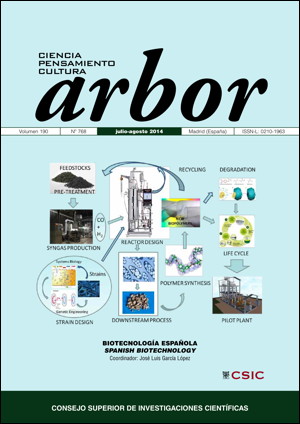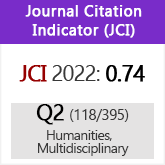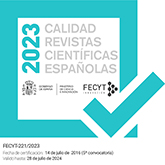Biología sintética: aspectos científicos y sociales
DOI:
https://doi.org/10.3989/arbor.2014.768n4002Palabras clave:
Vida, síntesis, complejidad, genomas, riesgos, DNAResumen
El 20 de Mayo de 2010 Craig Venter anunció que se había creado el primer genoma sintético auto-replicativo capaz de controlar el comportamiento metabólico de las células huésped. La reacción al anuncio de Venter fue de sorpresa y asombro, pero levantó toda una gama de alarmas desde entusiasmos alumbrados a exclamaciones de incertidumbre: ¿Qué quería decir este anuncio? La biología entraba en la era digital y afirmaciones sobre potenciales riesgos y beneficios invadieron el mundo científico. ¿Estamos acercándonos a la “creación de vida” mediante diseño? ¿Se podría crear materia viva a partir de materia no viva? ¿Cuál es la diferencia entre materia viva y no-viva? ¿El organismo que se había generado por síntesis química era el que se había diseñado? El reto estaba en saber diseñar las condiciones para que los genomas y los huéspedes funcionaran al unísono. El reto es, por tanto, científico, pero lo es igualmente técnico. ¿Tenemos los conocimientos suficientes para diseñar las interacciones entre unidades biológicas capaces de generar organismos nuevos? ¿Podría la biología sintética jugar algún papel en la clínica?.
Descargas
Citas
Anderson, C., Clarke, E. J., Arkin, A. P. y Voigt, C. A. (2006). Environmentally controlled invasion of cancer cells by engineered bacteria. Journal of Molecular Biology, 355, p. 619. http://dx.doi.org/10.1016/j.jmb.2005.10.076 PMid:16330045
Beaumier, C. M., Gillespie, P. M., Hotez, P. J. y Bottazzi, M. E. (2013). New vaccines for neglected parasitic diseases and dengue. Translational Research, 162, pp. 144-155. http://dx.doi.org/10.1016/j.trsl.2013.03.006 PMid:23578479
Beutler, B. y Rietschel, E. T. (2003). Innate immune sensing and its roots: the story of endotoxin. NatureReviews. Immunology, 3, pp. 169-176. http://dx.doi.org/10.1038/nri1004 PMid:12563300
Carcelén, J., Iniesta, V., Fernández Cotrina, J., Serrano, F., Parejo, J. C., Corraliza, I., Gallardo Soler, A., Mara-ón, F., Soto, M., Alonso, C. y Gómez Nieto, C. (2009). The chimerical multi-component Q protein from Leishmania in the absence of adjuvant protects dogs against an experimental Leishmania infantum infection. Vaccine, 27, pp. 5964-5973. http://dx.doi.org/10.1016/j.vaccine.2009.07.069 PMid:19666153
Cayabyab, M. J., Macovei, L. y Campos-Neto, A. (2012). Current and novel approaches to vaccine development against tuberculosis. Frontiers in Cellular and Infection Microbiology, 2, p. 154. http://dx.doi.org/10.3389/fcimb.2012.00154 PMid:23230563 PMCid:PMC3515764
Chávez-Fumagalli, M. A., Costa, M.A., Oliveira, D.M., Ramírez, L., Costa, L.E., Duarte, M.C. Martins, V.T., Oliveira, J.S., Olortegui, C.C., Bonay, P., Alonso, C., Tavares, C.A., Soto, M. y Coelho, E.A. (2010). Vaccination with the Leishmania infantum ribosomal proteins induces protection in BALB/c mice against Leishmania chagasi and Leishmania amazonensis challenge. Microbes and Infection, 12, pp. 967-977. http://dx.doi.org/10.1016/j.micinf.2010.06.008 PMid:20601076
Coelho, E. A., Ramírez, L., Costa, M.A., Coelho, V.T., Martins, V.T., Chávez-Fumagalli, M. A.,Oliveira, D.M., Tavares, C.A., Bonay, P., Gómez Nieto, C., Abánades, D.R., Alonso, C. y Soto, M. (2009). Specific serodiagnosis of canine visceral leishmaniasis using Leishmania species ribosomal protein extracts. Clinical and Vaccine Immunology, 16, pp. 1774-1780. http://dx.doi.org/10.1128/CVI.00295-09 PMid:19812259 PMCid:PMC2786384
Danino, T., Mondragón Palomino, O., Tsimring, L. y Hasty, J. (2010). A synchronized quorum of genetic clocks. Nature, 463, pp. 326-330. http://dx.doi.org/10.1038/nature08753 PMid:20090747 PMCid:PMC2838179
Duan, F. y March, J.C. (2010). Engineered bacterial communication prevents Vibrio cholerae virulence in an infant mouse model. Proceedings of the National Academy of Sciences of the United States of America, 107, pp. 11260-11264. http://dx.doi.org/10.1073/pnas.1001294107 PMid:20534565 PMCid:PMC2895089
Endy, D. (2005). Foundations for engineering biology. Nature, 438, pp. 449–453. http://dx.doi.org/10.1038/nature04342 PMid:16306983
Gomes, R., Oliveira, F., Teixeira, C., Meneses, C., Gilmore, D.C., Elnaiem, D.E., Kamhawi, S. y Valenzuela, J.G. (2012). Immunity to sand fly salivary protein LJM11 modulates host response to vector-transmitted Leishmania conferring ulcer-free protection. Journal of Investigative Dermatology, 132, pp. 2735-2743. http://dx.doi.org/10.1038/jid.2012.205 PMid:22739793 PMCid:PMC3461249
Gurunathan, S., Klenman, D. M. y Seder, R. A. (2000). DNA vaccines: immunology, application, and optimization. Immunology. Annual Review of Immunology, 18, pp. 927-974. http://dx.doi.org/10.1146/annurev.immunol.18.1.927 PMid:10837079
Iborra, S., Parody, N., Abánades, D.R., Bonay, P., Prates, D., Novais, F. O., Barral-Neto, M., Alonso, C. y Soto, M. (2008). Vaccination with the Leishmania major ribosomal proteins plus CpG oligodeoxynucleotides induces protection against experimental cutaneous leishmaniasis in mice. Microbes and Infection, 10, pp. 1133-1141. http://dx.doi.org/10.1016/j.micinf.2008.06.002 PMid:18603012
Lu, T. K. y Collins, J.J. (2009). Engineered bacteriophage targeting gene networks as adjuvants for antibiotic therapy. Proceedings of the National Academy of Sciences of the United States of America, 106, pp. 4629-4634. http://dx.doi.org/10.1073/pnas.0800442106 PMid:19255432 PMCid:PMC2649960
Molano, I., Alonso, M. G., Mirón, C., Redondo, E., Requena, J. M., Soto, M., Nieto, C. G. y Alonso, C. (2003). Leishmaniainfantum multi-component antigenic protein mixed with live BCG confers protection to dogs experimentally infected with L. infantum. Veterinary Immunology and Immunopathology, 92, pp.1-13. http://dx.doi.org/10.1016/S0165-2427(02)00315-X
Ramírez, L., Santos, D.M., Souza, A.P., Coelho, E.A., Barral, A., Alonso, C., Escutia, M.R., Bonay, P., Oliveira, C.I. y Soto, M. (2013). Evaluation of immune responses and analysis of the effect of vaccination of the Leishmania major recombinant ribosomal proteins L3 or L5 in two different murine models of cutaneous leishmaniasis. Vaccine, 31, pp. 1312-1319. http://dx.doi.org/10.1016/j.vaccine.2012.12.071 PMid:23313653
Soto, M., Requena, J.M., Quijada, L., Ángel, S.O., Gómez, L.C., Guzmán, F., Patarroyo, M.E. y Alonso, C. (1995). During active viscerocutaneous leishmaniasis the anti-P2 humoral response is specifically triggered by the parasite P proteins. Clinical and Experimental Immunology, 100, pp. 246-252. http://dx.doi.org/10.1111/j.1365-2249.1995.tb03661.x PMid:7743663 PMCid:PMC1534337
Wolff, J. A., Malone, R.W., Williams, P., Chong, W., Acsadi, G., Jani, A. y Felgner, P.L. (1990). Direct gene transfer into mouse muscle in vivo. Science, 247, pp. 1465-1468. http://dx.doi.org/10.1126/science.1690918 PMid:1690918
Yang, Y. L.,Chang, S.H., Gong, X., Wu, J. y Liu, B. (2012). Expression, purification and characterization of low-glycosylation influenza neuraminidase in alpha-1,6-mannosyltransferase defective Pichia pastoris. Molecular Biology Reports, 39, pp. 857-864. http://dx.doi.org/10.1007/s11033-011-0809-z PMid:21567198
You, L., Cox, R. S., Weiss, R. y Arnold, F. H. (2004). Programmed population control by cell-cell communication and regulated killing. Nature, 428, pp. 868-871. http://dx.doi.org/10.1038/nature02491 PMid:15064770
Publicado
Cómo citar
Número
Sección
Licencia
Derechos de autor 2014 Consejo Superior de Investigaciones Científicas (CSIC)

Esta obra está bajo una licencia internacional Creative Commons Atribución 4.0.
© CSIC. Los originales publicados en las ediciones impresa y electrónica de esta Revista son propiedad del Consejo Superior de Investigaciones Científicas, siendo necesario citar la procedencia en cualquier reproducción parcial o total.Salvo indicación contraria, todos los contenidos de la edición electrónica se distribuyen bajo una licencia de uso y distribución “Creative Commons Reconocimiento 4.0 Internacional ” (CC BY 4.0). Puede consultar desde aquí la versión informativa y el texto legal de la licencia. Esta circunstancia ha de hacerse constar expresamente de esta forma cuando sea necesario.
No se autoriza el depósito en repositorios, páginas web personales o similares de cualquier otra versión distinta a la publicada por el editor.















